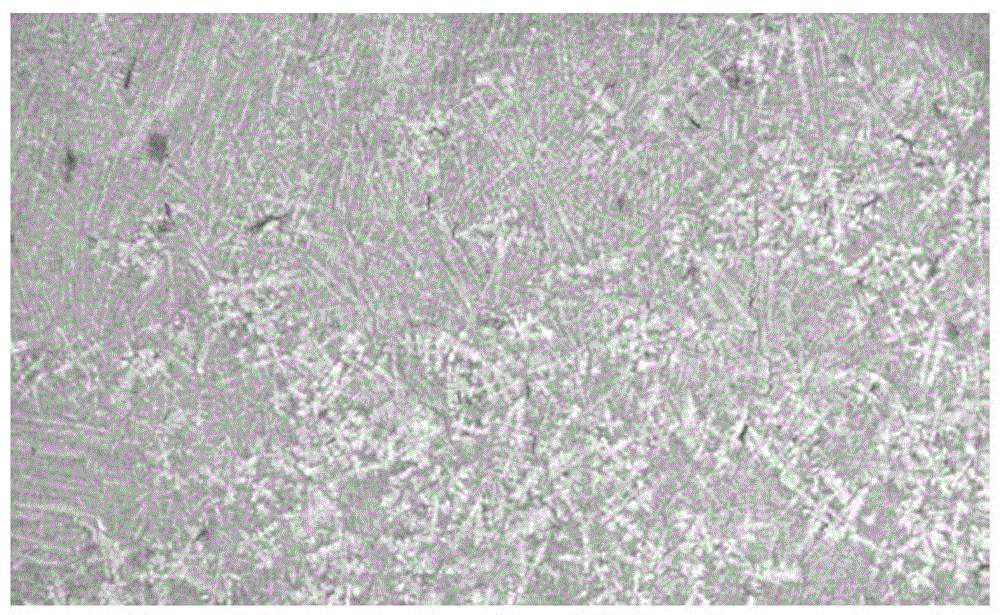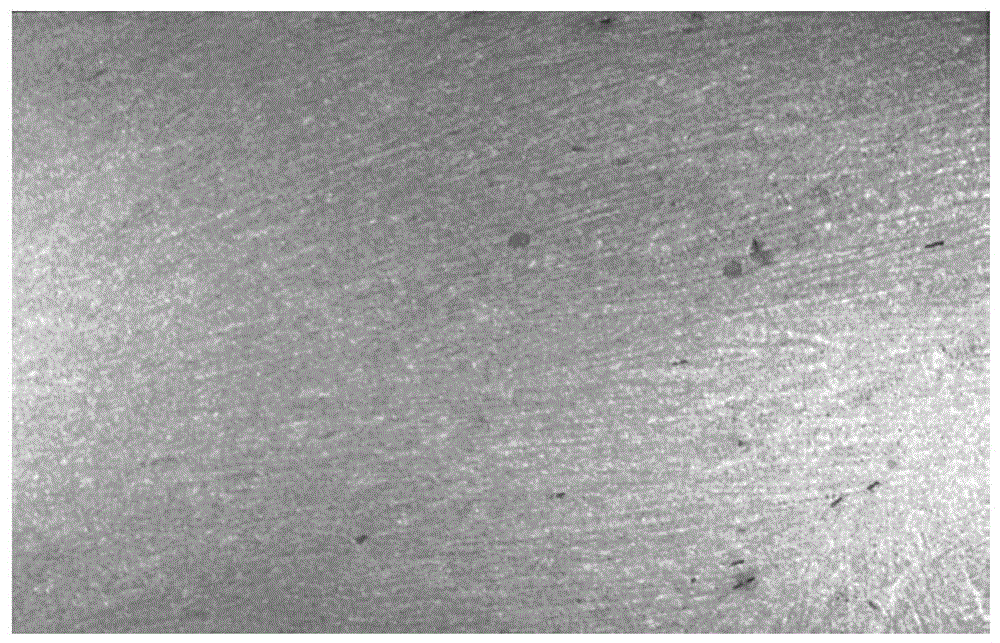A hot corrosion and display method of low carbon er50-6 slab dendrites
A display method and hot corrosion technology, applied in the field of metallographic inspection, can solve the problems of damage to the surrounding environment, large acid consumption, complicated ratio and other problems, and achieve the effects of clear display, less acid consumption and simple operation.
- Summary
- Abstract
- Description
- Claims
- Application Information
AI Technical Summary
Problems solved by technology
Method used
Image
Examples
Embodiment 1
[0019] The low-carbon continuous casting steel continuous casting slab ER50-6 is taken, and the composition (mass percentage) of the casting slab is: C 0.077, Si 0.87, Mn 1.46, P 0.014, S 0.014, Ti 0.004. The dendrite corrosion and display steps of this continuous casting slab are:
[0020] 1) Cut the sample on the slab, the sample is rectangular, the length and width of the sample are 4.5cm and 3cm respectively, and the thickness is 2cm.
[0021] 2) Then the sample is ground and polished. When grinding, the sandpaper is sequentially selected as 150#, 600# and 800# sandpaper. When polishing, the polishing agent of 7 μm and 3.5 μm is used for polishing until there is no scratch on the surface of the sample. Sample surface roughness ≤ 0.1μm, ready for use.
[0022] 3) Prepare the solution: mix 80ml of pure hydrochloric acid and 100ml of distilled water into a beaker, then add 3.6g of picric acid, and stir evenly.
[0023] 4) Heat the constant temperature bath to 70°C, put the ...
Embodiment 2
[0028] The low-carbon continuous casting steel continuous casting slab ER50-6 is taken, and the composition (mass percentage) of the casting slab is: C 0.075, Si 0.87, Mn 1.46, P 0.014, S 0.014. The dendrite corrosion and display steps of this continuous casting slab are:
[0029] 1) Cut the sample on the slab, the sample is rectangular, the length and width of the sample are 4cm and 3cm respectively, and the thickness is 2cm.
[0030] 2) Then the sample is ground and polished. When grinding, the sandpaper is sequentially selected as 150#, 600#, and 800# sandpaper. When polishing, the polishing agent of 7 μm and 3.5 μm is used for polishing in sequence until there is no scratch on the surface of the sample , the sample surface roughness ≤ 0.1μm, ready for use.
[0031] 3) Prepare the solution: mix 70ml of pure hydrochloric acid and 100ml of distilled water into a beaker, then add 4.2g of picric acid, and stir evenly.
[0032] 4) Heat the constant temperature bath to 75°C, pu...
PUM
| Property | Measurement | Unit |
|---|---|---|
| surface roughness | aaaaa | aaaaa |
Abstract
Description
Claims
Application Information
 Login to View More
Login to View More - R&D
- Intellectual Property
- Life Sciences
- Materials
- Tech Scout
- Unparalleled Data Quality
- Higher Quality Content
- 60% Fewer Hallucinations
Browse by: Latest US Patents, China's latest patents, Technical Efficacy Thesaurus, Application Domain, Technology Topic, Popular Technical Reports.
© 2025 PatSnap. All rights reserved.Legal|Privacy policy|Modern Slavery Act Transparency Statement|Sitemap|About US| Contact US: help@patsnap.com


